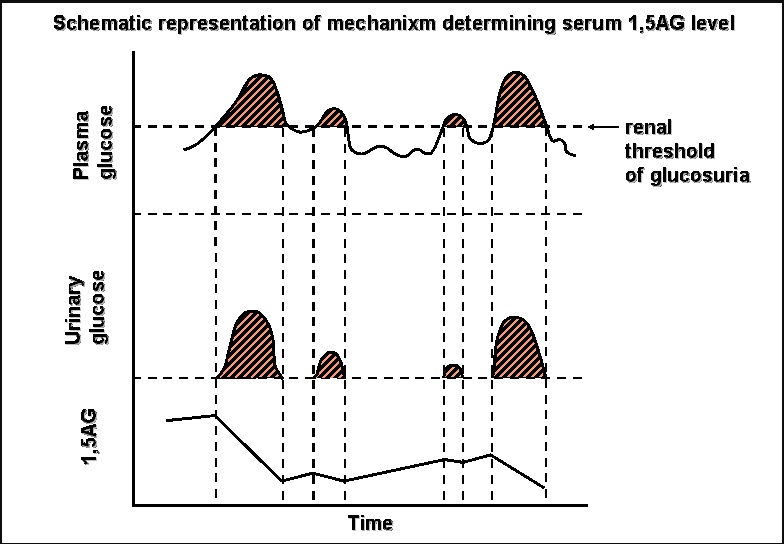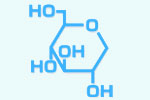2.Why only 1,5-anhydroglucitol(1,5-AG) can detect glucose spike?

On the other hand, both HbA1c and glycoalbumin require several hours duration of hyperglycemia to complete their form (glycation reaction).
Postprandial hyperglycemia, often shown in early stage in patients with diabetes mellitus, is usually a very short-term hyperglycemia, so-called glucose spike.
Thus, HbA1c or glycoalbumin does not sufficiently reflect glucose spike.
This is the reason for the discrepancy of changes in 1,5-AG and HbA1c (or fructosamine) after starting anti-postprandial hyperglycemic drugs, such asα-GI, glinides, glucagon-like peptide(GLP)1-related drugs and rapid-acting insulins.
!!Caution!!
Acarbose is only one exception.
This drug often interferes the kinetics of 1,5-AG, and lowers its blood level.
